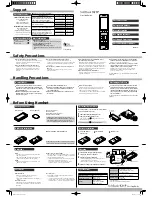
U.S. FDA
137
M56 Barracuda long, am english, A31008-H6350-A40-1-4A19 (28. July 2003,
©
Siem
ens A
G
2001
, I
:\Mob
il\L55\M
56_Barra
cuda\fug\Anlief
erung_22070
3\a
m
_FD
A
.FM
• Design mobile phones in a way
that minimizes any RF exposure to
the user that is not necessary for
device function; and
• Cooperate in providing mobile
phone users with the best possible
information on what is known
about possible effects of mobile
phone use on human health.
At the same time, FDA belongs to an
interagency working group of the
federal agencies that have responsi-
bility for different aspects of mobile
phone safety to ensure a coordi-
nated effort at the federal level.
These agencies are:
• National Institute for Occupa-
tional Safety and Health
• Environmental Protection Agency
• Federal Communications Com-
mission
• Occupational Health and Safety
Administration
• National Telecommunications and
Information Administration
The National Institutes of Health also
participates in this group.
In the absence of conclusive information
about any possible risk, what can con-
cerned individuals do?
If there is a risk from these products
— and at this point we do not know
that there is — it is probably very
small. But if people are concerned
about avoiding even potential risks,
there are simple steps they can take
to do so. For example, time is a key
factor in how much exposure a per-
son receives. Those persons who
spend long periods of time on their
hand-held mobile phones could con-
sider holding lengthy conversations
on conventional phones and reserv-
ing the hand-held models for shorter
conversations or for situations when
other types of phones are not avail-
able.
People who must conduct extended
conversations in their cars every day
could switch to a type of mobile
phone that places more distance
between their bodies and the source
of the RF, since the exposure level
drops off dramatically with distance.
For example, they could switch to:
• a mobile phone in which the
antenna is located outside the
vehicle,
• a hand-held phone with a built-in
antenna connected to a different
antenna mounted on the outside
of the car or built into a separate
package, or
• a headset with a remote antenna
to a mobile phone carried at the
waist.
Where can I find additional information?
For additional information, see the
following websites:
• Federal Communications Com-
mission (FCC) RF Safety Program
(select “Information on Human












































